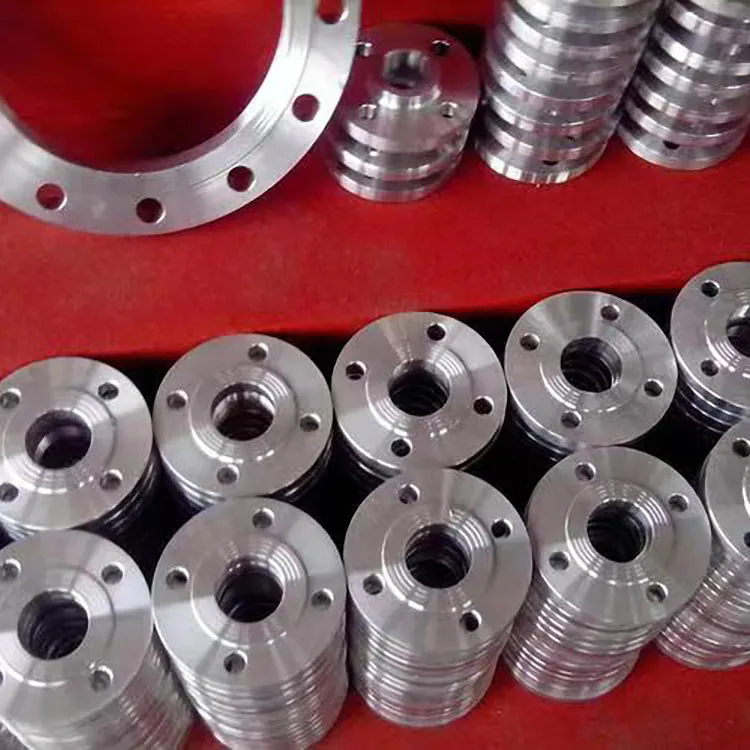Understanding Flanged Pipe Fittings: Your Questions Answered
2024-10-30
Flanged pipe fittings are essential components in piping systems used across various industries, from water supply to oil and gas. They play a crucial role in connecting pipes, valves, and other equipment. In this blog post, we will answer some common questions about flanged pipe fittings to help you understand their importance and applications.
What Are Flanged Pipe Fittings?
Flanged pipe fittings are connection components characterized by a flange—a flat piece of metal that extends from the fitting. These fittings allow for easy connection and disconnection of pipes and other equipment. Flanges can be welded, bolted, or threaded to other components in the piping system, providing a reliable and secure joint.
How Do Flanged Pipe Fittings Work?
Flanged pipe fittings work by creating a tight seal between two pipe ends or between a pipe and another fitting. The flanges are usually equipped with bolt holes around the perimeter. When the flanges are aligned and bolted together, a gasket is typically placed between them to create a watertight or airtight seal. This design allows for easy assembly and disassembly, making maintenance and repairs more straightforward.
What Are the Advantages of Flanged Pipe Fittings?
1. Ease of Installation: Flanged fittings can be easily installed and removed without the need for specialized tools, making them convenient for maintenance.
2. Versatile Applications: Flanged fittings are used in various applications, including water supply, HVAC systems, chemical processing, and oil and gas transportation.
3. Strong and Durable Connections: Flanged joints provide robust connections that can withstand high pressure and temperature, ensuring the integrity of the piping system.
4. Variety of Materials: Flanged fittings are available in a wide range of materials, including stainless steel, carbon steel, and plastic, allowing for compatibility with different media and environmental conditions.
What Are the Different Types of Flanged Pipe Fittings?
There are several types of flanged pipe fittings, including:
1. Flanged Elbows: These fittings allow for changes in direction in the piping system, typically at angles of 90 or 45 degrees.
2. Flanged Tees: Used to connect three pipes at a junction, allowing flow in multiple directions.
3. Flanged Reducers: These fittings enable a smooth transition from a larger pipe diameter to a smaller one, helping to manage changes in flow rates.
4. Flanged Caps: Used to seal the end of a pipe, flanged caps help to maintain system pressure and prevent leaks.
How Do I Choose the Right Flanged Pipe Fittings for My Application?
When selecting flanged pipe fittings, consider the following factors:
1. Pipe Size: Ensure that the flanged fitting matches the diameter of the pipes in your system.
2. Pressure and Temperature Ratings: Choose fittings that can handle the pressure and temperature conditions of your application. Always refer to the manufacturer’s specifications.
3. Material Compatibility: Select flanged fittings made from materials that are compatible with the fluid or gas being transported. For example, use stainless steel fittings for corrosive environments.
4. Standards and Specifications: Check for industry standards (such as ANSI, ASME, or ASTM) relevant to your application to ensure compliance and safety.
Are There Any Challenges Associated with Flanged Pipe Fittings?
While flanged pipe fittings offer many benefits, there are some challenges to consider:
1. Cost: Flanged fittings can be more expensive than other types of fittings, particularly when considering the cost of gaskets and bolts.
2. Space Requirements: Flanged connections require more space than welded or threaded connections, which can be a concern in tight installations.
3. Potential for Leaks: If not installed correctly, flanged joints can develop leaks. It is essential to ensure proper alignment and tightening of bolts during installation.
Conclusion
Flanged pipe fittings are a vital component of many piping systems, offering ease of installation, versatility, and durability. Understanding their functionality and benefits can help you make informed decisions when selecting fittings for your projects. If you have more questions about flanged pipe fittings or need assistance with your piping system, feel free to reach out!



